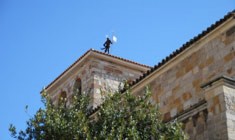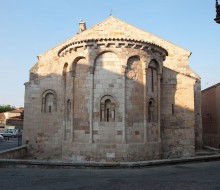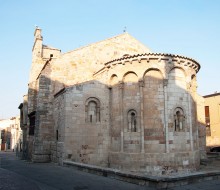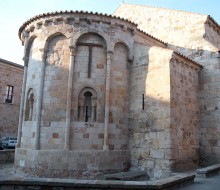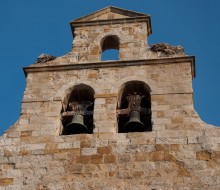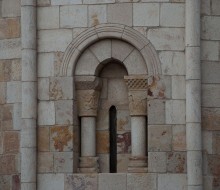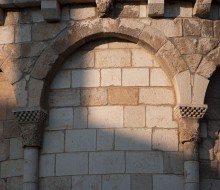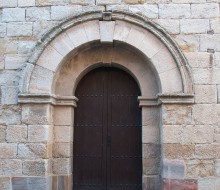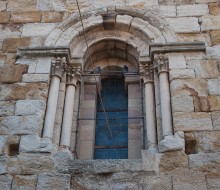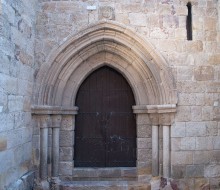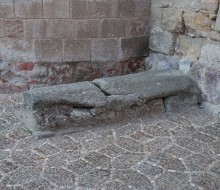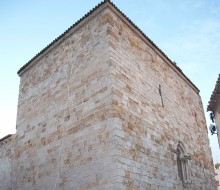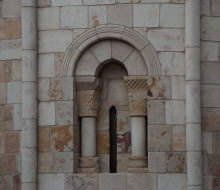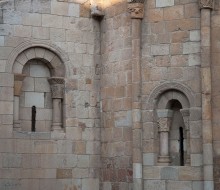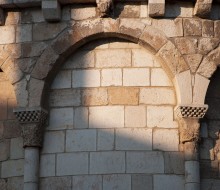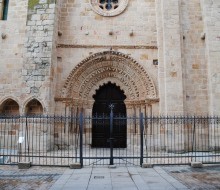Church of Santa María la Nueva
Zamora
Church of Santa María la Nueva
Zamora11th century
It is located on the eastern edge of the old part of town. The original church dates from the 11th century, but it was damaged by fire when citizens of Zamora committed arson during the “Motín de la Trucha” (Mutiny of the Trout) in 1158, when according to legend, nobles and plebeians came into conflict around the market. According to legend, the plebeians supported the son of a shoemaker who resisted the pantry man of a nobleman who wanted to snatch a trout from him that he had acquired on the market. Farmers set fire to the church while the nobles were inside it, trying to decide the punishment they would apply to people. The king, Ferdinand II, did not take reprisals against the people in exchange for rebuilding the church, which until then was dedicated to St. Roman.
On the northern wall of the first section of the nave there is a well-preserved slit through which, according to tradition, the Sacred Hosts got out to stay in the Beguinage of Las Dueñas during the Mutiny-of-the-Trout arson attack.
There is a variety of styles: it can be seen Romanesque style at its head and later-Romanesque style at the rest of the temple. Romanesque apse design and the southern original wall have been preserved. The same style was used during the rebuilding around 1200. Originally it had a basilica floor plan with a nave and two aisles, and a semicircular apse which was separated by a transversal pointed arch, connecting the nave and aisles. Due to reconstruction it was transformed into a single-nave temple, and the transversal arch and two rooms placed against both sides of the central apse.
Outside, its head part is well-preserved and the semi-cylindrical apse stands out. It is decorated with seven arches which rest on columns with thin column shafts. On each side of it, there are the two plain chapels.
The southern front, which is the front of the temple, is Romanesque. It is reinforced by buttresses and there is an opening that consists of a double horseshoe arch resting on columns with overelaborated capitals. All other accesses, which were made in its rebuilding, have no decorative figures.
In its interior part, it stands out a 12th-century font, under the tower section. It has reliefs of Christ's baptism and the famous Recumbent Jesus figure. It dates from the 17th century, and was sculpted by Francisco Fermín.
In 1959, were discovered linear-style murals, which form the oldest set of the province of Zamora. They are classed more as Gothic naturalism than Romanesque.
The Holy Week Museum is located on its northern side, and in front of the apse the bronze statue of "Barandales" can be seen. He is in charge of heading processions, ringing two heavy funeral bells from the 16th century.
Exterior
De su exterior se conserva la cabecera y destaca su ábside semicilíndrico, decorado con siete arcos sobre columnas con delgados fustes. A cada lado de este se abren dos capillas planas. La fachada sur, que es la portada del templo, también original del románico, se articula mediante contrafuertes, con vano de ingreso compuesto por un arco de herradura doblado que descansa en columnas con capiteles historiados. Los demás accesos, ya hechos en su reconstrucción, presentan ausencia de decoración figurada.
Interior de la Iglesia de Santa María la Nueva
Pinturas Murales
En 1959 se descubrieron unas pinturas murales de estilo lineal que se catalogan más hacia el naturalismo gótico que hacia el románico.
GET DIRECTIONS
ROUTES
OPENING HOURS AND VISITS
From 1st October until 1st March:
From Tuesday until Sunday: from 10:00 to 14:00 and from 16:30 to 18:30.
Closed on Monday.
From 1st March until 30th September:
From Tuesday until Sunday: from 10:00 to 13:00 and from 17:00 to 20:00.
Closed on Monday.
GENERAL INTEREST SERVICES
Tourist offices:
- Local tourist office: It is located at 5, Arias Gonzalo Square. Tel. +34 980 533 694
- Castilla y León tourist office: It is located at 1, Príncipe de Asturias Avenue. Tel. +34 980 531 845
- Provincial tourist office: It is located at Viriato Square. Tel. +34 980 534 047
Local police: Tel. +34 980 531 245
Civil Guard (police with responsibilities outside towns): Tel. +34 980 521 100
Emergency telephone numbers: 112
- Virgen de la Concha (Hospital): Tel. +34 980 548 212
Bus station: Tel. +34 980 521 281
Train station: Tel. +34 980 521 110
Taxi: Tel. +34 630 630 630
Civil defence: Tel. +34 980 536 190
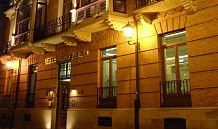
Hotel Horus
Zamora
El Hotel Horus, abierto en el año 2001, tiene un total de treinta y ocho habitaciones dobles que se dividen entre cuatro…
More info